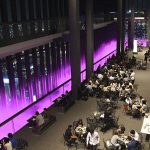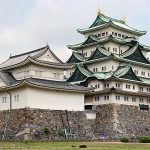
In the cityscape of Nagoya, Japan, the Nagoya TV Tower looms large, not just as an architectural marvel but as a symbol of post-war recovery and cultural evolution. Since its inauguration in 1954, this 180-meter-tall edifice has transcended its initial role as a pioneering broadcasting tower to become a cherished emblem of the city’s past, present, and future.
Historical Significance
The Nagoya TV Tower’s legacy began as Japan’s first TV tower, heralding a new era of television broadcasting in the region. This engineering marvel marked a significant stride towards modernity and technological advancement when the nation navigated its recovery from war adversities. It served as a vital conduit for news distribution and entertainment, laying the foundation for the media landscape in Japan.
Architectural Grandeur
Mirroring the elegance of the Eiffel Tower with its lattice framework, the Nagoya TV Tower blends Western and Japanese architectural elements. Its aesthetic appeal and robust design set a precedent for subsequent broadcasting towers across Japan and became a blueprint for melding tradition with modernity. Although it has not received formal architectural awards, its design has been widely praised.
Godzilla’s Cinematic Encounter
In a dramatic twist of art imitating life, the Nagoya TV Tower found itself in the center of fictional cataclysms in iconic movies. In “Mothra vs. Godzilla” (1964), the tower met its cinematic demise at the hands of Godzilla, and later, in the 1992 remake “Godzilla vs. Mothra,” it was Battra who brought down this steel giant. These scenes hold symbolic weight, reflecting filmmakers’ cautionary tales of nature clashing with human-made marvels.
A Novel Transformation: The Tower Hotel Nagoya
Fast forward to 2020, the tower embarked on a novel journey, morphing into the world’s first hotel within a TV tower. The transformation, encapsulated in “THE TOWER HOTEL NAGOYA,” saw three floors being meticulously renovated into a modern hotel while retaining the vintage allure of the original structure. According to guests, this innovative fusion offers a unique hospitality experience and serves as a respectful ode to the tower’s historical and cultural essence.
Observation Decks and Night-time Views
The tower houses two main observation decks, the indoor Sky Deck at 90 meters and the outdoor Sky Balcony at 100 meters, providing awe-inspiring panoramic views of Nagoya’s urban landscape. The tower’s illumination at night presents a splendid view of the city, offering a picturesque scene of glimmering lights, showcasing a different yet charming aspect of Nagoya.
Dining and Leisure
At the tower’s base, a sprawling beer garden and restraunts await visitors and occasional live performances, offering a culinary and cultural treat to complement the visual feast. This leisure area provides a relaxed ambiance for tourists to unwind and enjoy local flavors, enhancing the overall experience.
Location and Accessibility
The Nagoya TV Tower is situated in the heart of Nagoya, easily accessible from Hisaya Odori Station. Its central location offers easy access for tourists to experience the tower and its surrounding attractions. Visitors can find general amenities like free and paid parking, shops, and restrooms, ensuring a convenient and enriching visit.
In sum, the Nagoya TV Tower is not merely an architectural marvel but an enduring symbol of Nagoya’s resilient past, dynamic present, and ambitious future. From its groundbreaking role in broadcasting to its cinematic adventures and innovative repurposing as a hotel, the tower remains a captivating testament to Nagoya’s relentless drive for progress.
KKPCW, CC BY-SA 4.0, via Wikimedia Commons




Pingback: Winter Illumination in Nagoya 2023 – Like Nagoya